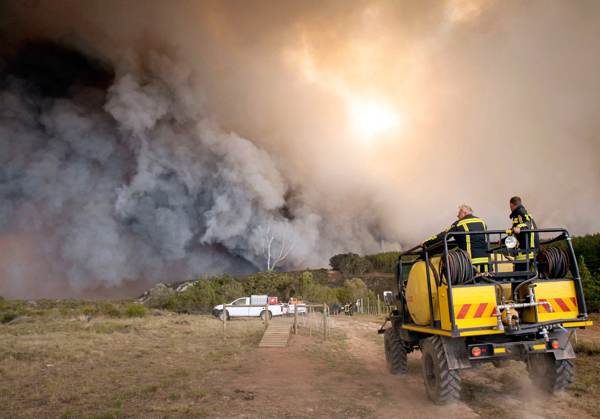Only three percent of losses caused by drought, floods and tropical cyclones have been insured on the African continent. This emerged at a recent DZ BANK Capital Markets Conference held in Berlin.
 Insured losses on the African continent are close to 97 percent, which means, at best, only three percent of losses caused by drought, floods and tropical cyclones have been insured.
Insured losses on the African continent are close to 97 percent, which means, at best, only three percent of losses caused by drought, floods and tropical cyclones have been insured.
“These figures reveal the massive quantum of the gap,” said Africa Risk Capacity (ARC) Limited Chief Underwriting Officer, Malvern Chirume. He was speaking as part of a panel of seven risk-financing experts, discussing the role of capital markets in disaster risk funding (DRF).
The need for insurance cover against natural disasters is, however, becoming better understood. Adam Cotter, Senior Vice President of DZ BANK AG, said: “We’re in a period of disasters, and it’s no surprise that disaster-risk financing is gaining recognition for its ability to build resilience to external shocks, which can have multi-generational effects”.
Following Cotter’s lead-in, head of Market Solutions and Structured Finance at the World Bank, Michael Bennett, defined an important instrument in DRF – the catastrophe bond.
“It’s like insurance embedded into a transferrable security. The issuer of the bond acts as an intermediary between the party that wants insurance, and the providers of that risk coverage.”
“The insured party pays premiums, those premiums get mixed in with the funding costs of the issuer, coupons are issued to the risk takers and, if no trigger events occur, at maturity investors get their money back.”
“The trick,” he added, “is if something does occur. In this case, the insurance kicks in and the intermediary uses a portion of the bond to pay the insured parties.”
The World Bank has to date issued about US$3.6 billion in cat bonds, in categories from hurricanes and tropical cyclones to tropical cyclone- induced flooding, tsunamis and pandemics. But could more risks could be covered, perhaps even cyber terrorism?
“So far, we’ve only scratched the surface with 20-odd transactions. We’re very excited about the potential in this area,” Bennett said.
Elaborating on his group’s role in DRF, ARC Limited Chief Underwriting Officer, Malvern Chirume, said: “ARC is Africa’s first sovereign risk pool, set up to combat the threat of climate-related disasters – mainly drought. In essence, we help member states to better plan, prepare and respond to disasters… and they are tasked with specifying how they’ll spend any payouts received.”
Since 2014, ARC has provided nearly US$1 billion in cover, mainly for drought but also other risks, to more than 15 countries. And, as of the end of May, it is on course to make payouts of over US$120 million to more than 10 countries and their designated humanitarian agencies.
Chirume also sees the ARC’s role as one of advocating on African countries’ behalf for climate justice. “The African continent is going to bear the brunt of the impact of global warming – and any future pandemics. So, there’s a role for insurance, and other tools, in closing the massive protection gap.”
A select group of people and institutions are involved in DRF, and Cotter asked why their efforts have not gained more momentum to date: “Cat bonds require that we lock in a country for three years,” advised Chirume, “whereas our customers prefer to renew their contracts annually. They could have a change of government, or even a change of minister in a slightly longer period, which would put our programme at risk.”
“There are good reasons why the cat bond market exists,” Bennett explained. “The coupon that investors receive is a combination of the funding cost of the issuer, and the premium paid by insured clients.”
“Capital market investors, who like high-risk returns, have driven the cat bond market to date – it’s uncorrelated risk. They’re getting high returns compared to the credit market yet facing highly uncorrelated risk. But it’s not totally crazy…” Chirume made the point that each of the panellists has their own specialist area.
Michael Roth, Public sector practice lead at Munich Re, said: “Let’s highlight that the purpose comes first – using risk finance as an instrument to address global challenges. Let’s not lose the purpose of what we could collectively achieve via these instruments.” Bennett underlined that risk is massive in the world (climate risk, disaster risk) and there is massive capital chasing returns based on that risk.
“The money is there, the risks are there. It’s just about coming up with the right products that connect the two.” And that 97 percent coverage gap? “If you compare the rationale of the German government supporting the Jamaican cat bond issuance, the logical conclusion is that we need DRF investments right now to have future impact. The pandemic has reduced the capability of countries, even further, to react to climate-related events. We all need to act now to bring about change – or a human price will be paid,” Bennett concluded.


